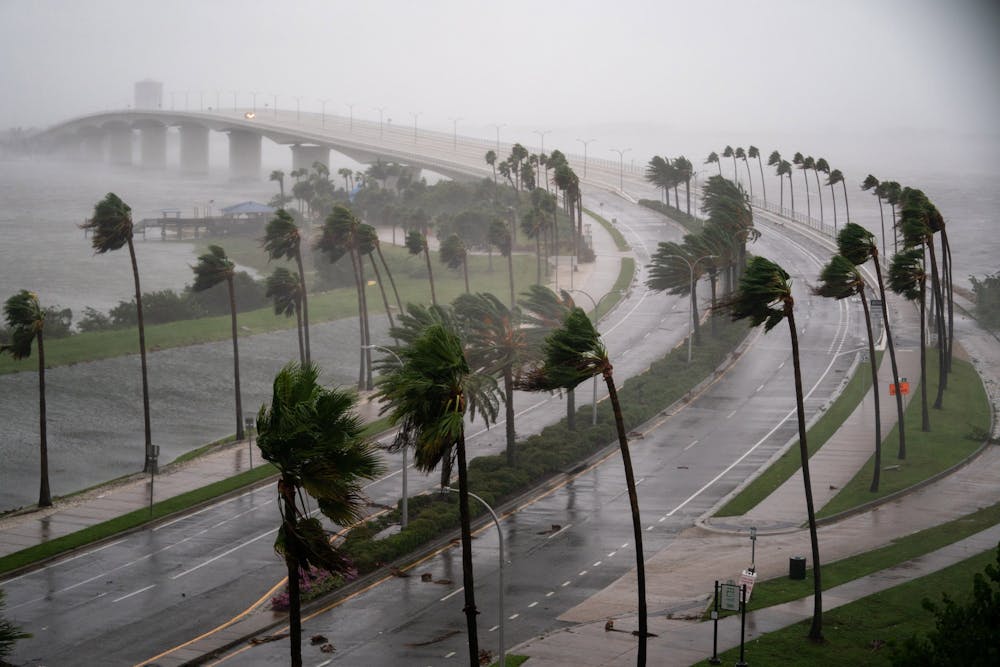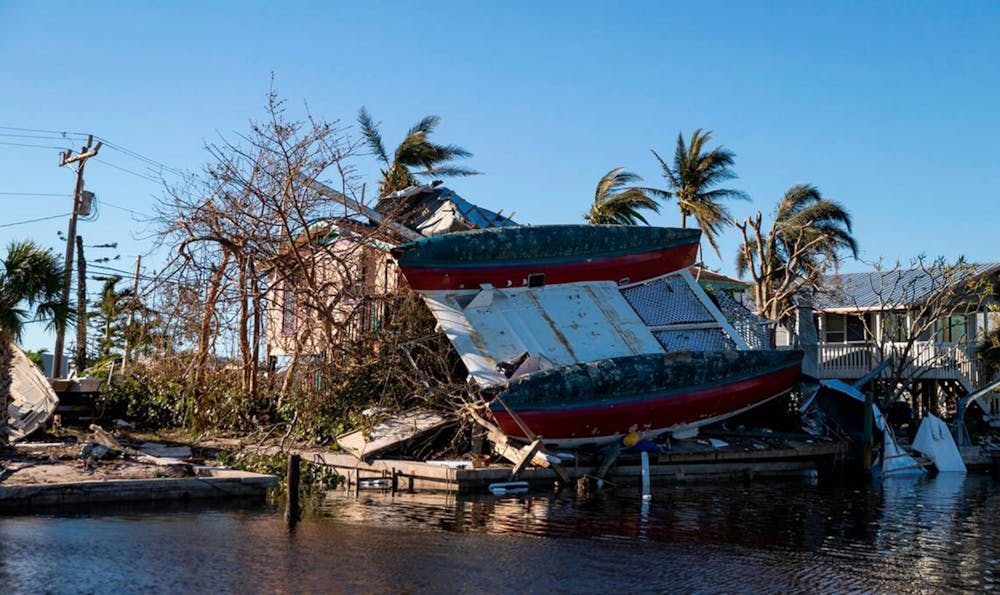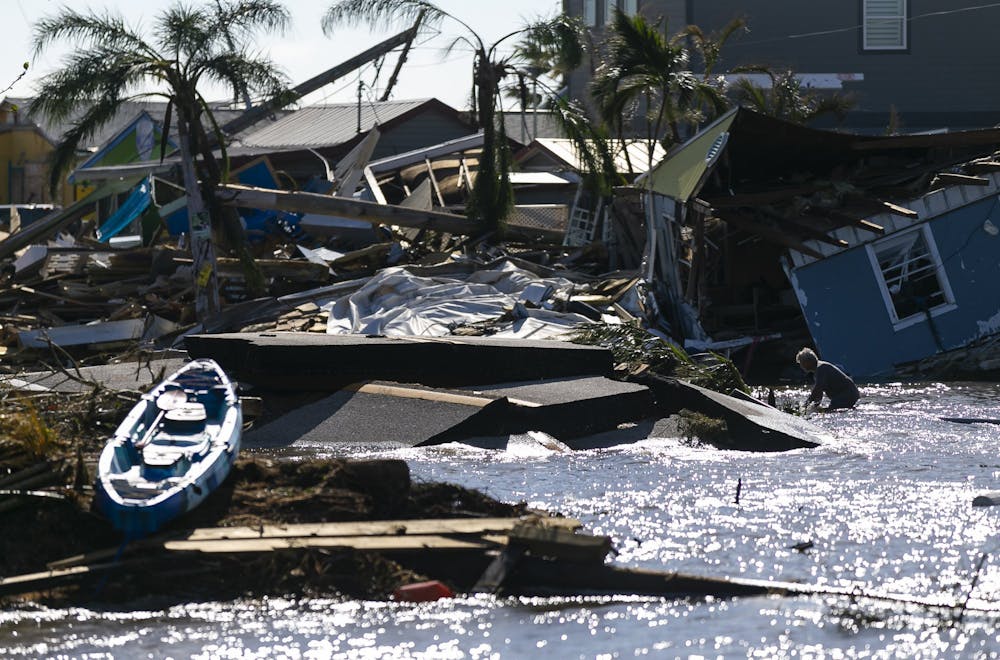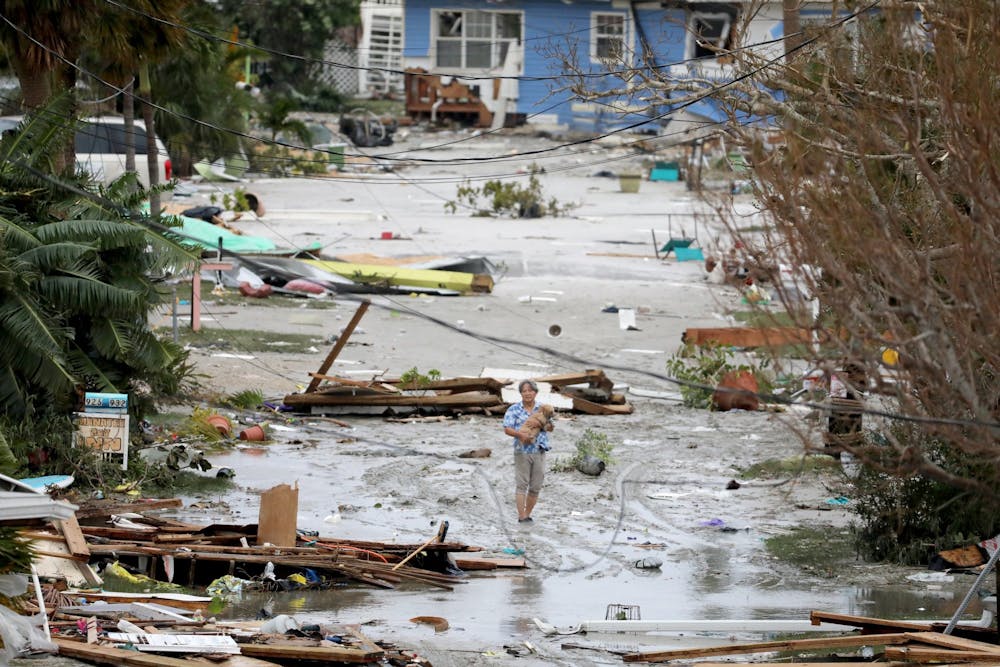One of the most powerful natural forces has surged across southwest Florida, bringing along devastating and even life-threatening effects, contributing to the losses seen throughout the areas of landfall.
The tropical storm known as Hurricane Ian tore through regions in southwest Florida Sept. 28, causing severe flooding, destruction of important roadways and damaged houses. The 150 mph winds swept through the area, leaving a devastating aftermath to the residents inhabiting the areas.
Along with the rest of the country, researchers have been watching the storm closely.
“Right near where it landfalls, there’s going to be major destruction,” Dr. David Call, professor of geography, said. “The storm surge could be pretty catastrophic for places like Punta Gorda and around Port Charlotte. Right along the coastline, the storm will push a lot of water ashore.”
This water ashore resulted in flooded streets and homes, causing houses and buildings to submerge into the flood.
“Water is very dense, and so moving water can be quite destructive,” Call said. “It only takes a few inches of moving water to knock you off your feet. Toward Fort Myers, there's going to be some pretty serious destruction from the waves coming ashore.”

Despite currently living in Muncie as a Ball State University student, redshirt freshman quarterback Kiael Kelly grew up in Tampa, Florida, where his family still resides. Kelly was in Tampa when Hurricane Irma hit in 2017 and said the mindset during a hurricane is to evacuate and hope for the best.
“You really don’t know what can happen with storms like that,” Kelly said. “Things change really by the minute, so you really just try to stay safe and play it by ear.”
When Ian formed, Kelly’s parents evacuated to Bradenton, Florida where his grandparents live, but the hurricane still hit them.
“Still having to live your life, it’s kind of hard,” Kelly said. “Luckily we didn’t have any serious damage, just some trees down and some debris around where we live.”
Almost 17 hours away and with most cellular data down because of the storm, Kelly was only able to talk to his family intermittently or after the worst of the storm had passed.
Originally from Antwerp, Ohio, Alex Hindenlang, Ball State 2022 alumna, said she felt torn between how she and her boyfriend should handle the new circumstance. She and her boyfriend thought the storm wouldn’t hit them, but when her coworkers started getting sandbags for their homes, she thought differently.
Hindenlang and her boyfriend were unsure of what their decision was going to be in terms of evacuating while still in Tampa. They decided to prepare by gathering supplies at an almost empty grocery store in preparation for the worst case scenario.
“It was just crazy because I had never experienced anything like this as far as preparing for a storm goes and I was very overwhelmed and emotional,” Hindenlang said. “Feeling just like, ‘I’m not ready to die.’”
Getting the exact location of where the hurricane was bound to hit, or the severity of the storm, was extremely difficult for researchers to pinpoint, which caused even more confusion for inhabitants.
“With a hurricane, if it hits your town with a storm surge, your town could be leveled, but if the forecast track is just 10 or 20 miles different, your town could get some flooding, but it’s not total destruction,” Call said. “Getting that level of precision in meteorology is hard. We can tell that there's going to be a hurricane that's going to come ashore in Florida, but people on the ground need to know if it's going to hit their house, or the next house or the next town. It’s the difference between getting a few trees down in your backyard versus your house getting washed away.”

Although mainly southern regions in Florida were heavily affected, with the death count reaching over 100 according to Reuters News, central areas in Florida still had weather complications such as flood-water rising.
Ball State second-year music education major Brenna Franklin didn’t live in the region where Ian landed, but her hometown of Jupiter, Florida, still experienced a shift in its normal weather.
“There was one day that it completely rained all day, there was never a stopping point,” Franklin said. “There’s an area in our town called Jupiter Farms that was completely flooded for a day. Some people were even driving their ATV’s down the road with boards on the back surface.”
Those affected by the catastrophic storm aren’t limited to residents living in landfall territory. Many people are stuck watching their loved ones from afar, experiencing the storm while only being able to offer emotional support rather than physical. Emma Gsell, Ball State second-year marketing and communications major, has family in Florida.
“Having family members that just moved down there, experiencing the storm for the first time, worried if they’re going to make it, if they’ve taken precautions or if they're going to have enough resources until 911 or emergency vehicles can make it out there, is hard,” she said. “Fort Myers, where a lot of my family is, is currently predicted to not have emergency services for two weeks. Just knowing that some of them are alone and they don't have somebody else watching out for them, trying to get through it alone was very emotional.”
Some residents decided the best option for them would be to evacuate to a safer location. Hindenlang and her boyfriend were able to relocate to Salem, Alabama, for the time being due to his family connections, but the change was still challenging.
“I was just so overwhelmed about losing all of my things, but things are replaceable, we’re not, so we ultimately decided that we needed to go,” Hindenlang said. “We almost felt a little guilty for leaving, which is the craziest part of it. I had coworkers and friends who were still there because they didn't really have other places to go.”
The rebuilding process after the storm is projected to take longer than ten years, leaving people worried if the infrastructure will ever be the same.
“You can drive around New Orleans and still see evidence of Hurricane Katrina, and that was 17 years ago,” Call said. “There’s such a large scale, there’s so much that has to be rebuilt, it just takes a long time. You can only build things so quickly.”

As of publication, over 1.5 million people remain without power and over 2.5 million residents were put under strict evacuation orders before the storm even hit, according to World Vision.
Franklin said the destruction that has come with Hurricane Ian is leaving her with a sense of gratitude for the things she once had. She said she can’t take her house for granted, because even that is at risk.
For Hindenlang, she’s been collecting things, like furniture and a TV, which she had to leave behind.
“I finally felt like our place was a home, to think that all of that could be gone was really scary,” Hindenlang said. “Part of my biggest fears and where some of my emotions were coming from is that I was really just scared of how the two months we spent building a life in the community is just going to be ruined.”
Despite the devastation, in Fort Myers, the town that Gsell grew up in, many neighbors are reaching out to help her family and many others around them. She said communities in Florida are “tight-knit” and want to help others out.
Even though grief and feelings of misery are prominent, Gsell has a sense of hopefulness within her.
“I’m hopeful that it will come back to the “Sunshine State” that it always was,” Gsell said. “I want it to go back to that one place that everyone has fallen in love with.”
Contact Daniel Kehn with comments via email at daniel.kehn@bsu.edu or on Twitter @daniel_kehn or contact the Ball State Daily News with comments via email at editor@bsudailynews.com





